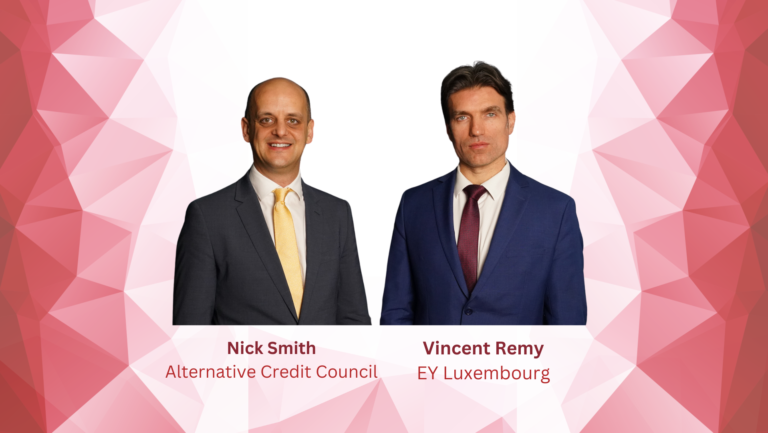By David Liebmann, Head of Distribution & Sales Innovation, Head of French Market, Lombard International Assurance.
As featured in LPEA Insight/Out magazine #19, September 2021.
All investors want their assets to be protected. Recent research shows that 75% of high-net-worth (HNW) individuals see future-proofing their wealth is more important than ever, and protecting their assets for the future was their top investment goal[1]. For this particular client segment, preserving their lifestyle and passing on wealth to the next generation is key, and these objectives can become more challenging in unpredictable market conditions.
Historically, equities and bonds have long been at the heart of investment strategies. In times of economic weakness, bonds brought stability to portfolios, whilst equities provided long-term growth. However, in an increasingly uncertain geopolitical and economic environment, with asset values artificially buoyed by recurring quantitative easing measures and low interest rates, market dynamics have become more complex and the risk/performance balance is no longer the only part of the equation. Sustainable yield remains hard to find, especially in fixed income assets. The knock-on effect is that clients are shying away from traditional stock markets’ growing volatilities.
Over the past 10 years, the demand for portfolio diversification with alternative asset classes has surged significantly. And this trend is only set to continue.
For these reasons, client concerns over their assets have no doubt been heightened in recent years. Designing strategies that can help towards future-proofing investment portfolios involves two main considerations: portfolio diversification and succession planning. As such, it is important that client portfolios reflect not only risk appetite but also a wider approach based on asset diversification and wealth transfer – especially if protecting their wealth is a key priority.
A growing interest in alternative asset classes
Diversification is a core part of modern portfolio theory and not ‘placing all your eggs in the same basket’ is one of the most heavily cited adages in investment management which is still all the more relevant today.
In the search for improved real returns to support wealth and succession planning, considering international family circumstances, geographical footprint and lifestyles, clients and their advisers are further diversifying their portfolios and taking a greater interest in alternative and non-traditional assets (NTAs).
Non-traditional investment classes include real estate, commodities and private equity, which HNW clients are choosing for their alternatives asset allocation strategies. While they all have their own specific features, these asset classes share the same benefits when it comes to their ability to potentially deliver higher real returns over the longer term, with low to minimal dependency on market fluctuations and volatility, thereby providing greater portfolio diversification and risk mitigation.
Over the past 10 years, the demand for portfolio diversification with alternative asset classes has surged significantly. And this trend is only set to continue. Research from Morgan Stanley[2] evidenced that institutional investors, including family offices and UHNW individuals, already hold around 90% of today’s more than $7 trillion private markets’ assets under management (AUM). The report estimates that this AUM could grow to around $13 trillion by 2025, driven by the demand from HNW investors. Asset allocations into private markets could represent an additional $1.5 trillion-worth of AUM by 2025.
In a continued period of uncertainty, alternative asset classes such as private equity provide clients with the additional potential benefit of decorrelation. As outlined in McKinsey’s Private Markets Annual Review[3], private equity continues to perform well, outpacing other private markets asset classes and traditional stocks and bonds. But the popularity of such investment decisions risks a backlog of capital. As commented by S&P Global Market Intelligence[4] in their 2021 Global Private Equity Outlook, dry powder is at an all-time high, with an estimated $1.9 trillion[5] globally, boosted by cheap debt.
This means that finding good investment opportunities is likely to become even more competitive in the near future, urging clients to not only diversify their assets across different categories, but also to rely on multiple asset managers, each one with a specific expertise, to manage them.
In this regard, whilst bespoke wealth planning solutions adapted to individual HNW requirements are becoming the norm, wealth advisers and their clients are tasking their providers with offering innovative and agile wealth planning solutions that facilitate flexible investment portfolios with the widest range of assets.
The benefits of investing in non-traditional assets using Unit-Linked life insurance
Investment-based insurance products, also known as Unit-Linked life insurance in Europe, provide HNW and UHNW clients with two intertwined benefits.
One is bespoke wealth and succession planning, with the ability to cater to the most complex of needs in terms of cross-border planning and wealth structuring, so that assets can be protected, preserved and passed on to the next generation.
The second one is the ability to invest in a broad range of asset classes, thanks to Luxembourg’s unique investment regime. These two characteristics make it a solution of choice for clients willing to diversify their portfolios, benefiting, at the same time, from life insurance solutions’ intrinsic set of features including deferred tax treatment, portability, asset protection and the ability to appoint the beneficiaries of your choice.
Unit-Linked life insurance solutions provide the opportunity to invest in NTAs such as private equity. Specifically designed for UHNW/HNW individuals and families, these solutions enable them to build their own tailored investment portfolios, giving them the freedom to appoint several custodian banks and asset managers, at the same time as having control over how and when their wealth is transferred. The investment strategy within a Unit-Linked life insurance solution is flexible and can be amended during the duration of the contract. Therefore, policyholders have the option of diversifying the assets they hold in their contract, in proportion to the amount invested and the type of funds chosen.
But NTAs go beyond just private equity and include a diverse range of assets, with no ‘one size fits all’ approach to their valuation or inclusion into the appropriate wealth planning solution. Each opportunity has specific valuation standards and methodologies that are often unique. It is therefore essential to partner with providers that have the required focus, expertise and experience when it comes to analysing, integrating and administrating NTAs into life insurance policies.
At Lombard International Assurance, we have built robust expertise in this field, with a proven track record of 30 years’ experience and the largest team of NTA experts in the market. Over 10% of our European portfolio is currently invested in NTAs.
In addition to evaluating suitability, integrating and managing selected assets within each Unit-Linked life insurance structure, our expert team delivers a wide range of professional and added value services to further support clients and advisers, thereby reducing their time spent monitoring these assets. These services range from periodic reviews of the asset for the purpose of qualifying the asset as eligible to hold within an insurance contract, ensuring full compliance with local regulatory, tax obligations and reporting requirements, management of corporate actions on the asset, to obtaining external valuation of the investments and comparative analysis in terms of fair market value. Being able to offer these full range of services throughout the life of the insurance contract is crucial to enable clients to benefit from the advantages of investing in NTAs via a Unit-Linked life insurance policy and ensuring the policies are fully compliant in the jurisdictions their they reside.
[1] https://www.prnewswire.com/news-releases/high-net-worth-individuals-say-its-more-important-to-future-proof-wealth-than-ever-before-as-they-plan-for-an-extended-retirement-300916288.html
[2] Morgan Stanley, Wealth and Asset Management: Competing for Growth, 2021, https://www.privateequityinternational.com/four-factors-enabling-hnw-growth-in-private-markets/
[3] McKinsey: Private Markets Annual Review – https://www.mckinsey.com/industries/private-equity-and-principal-investors/our-insights/mckinseys-private-markets-annual-review
[4] SP Global: Global PE Outlook 2021 https://www.spglobal.com/marketintelligence/en/news-insights/research/2021-global-private-equity-outlook
[5] Preqin




